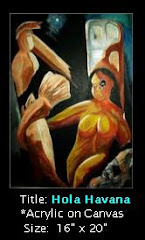It is hard to believe that it’s been 4 decades since we lost Judy Garland. I was scarcely a teenager when she died, but I remember the sadness I felt.
I grew up in a family that didn’t just appreciate the music, and entertainers, of the 1930s, 1940s, and 1950s . . . we practically revered them.
And Judy Garland had a justifiably high standing in our household. I grew up on her musicals.
Not just the Wizard of Oz, but the backyard musicals of Mickey Rooney and Judy Garland, the big MGM productions of the 1940s like Meet Me In St. Louis, and The Harvey Girls, and The Pirate.
By the late 1940's, however, Judy’s career was coming unraveled. She was released from MGM after `a nervous breakdown’ followed by a suicide attempt and having to drop out of a succession of movies including Annie Get Your Gun and The Barkleys of Broadway.
Judy Garland, once the box office sensation of MGM, was no longer considered a `good risk’ for the studio. She would come back, of course. Her career would rebound after appearances on the London Stage.
In 1954, Garland filmed a remake of A Star Is Born, with James Mason. While not a commercial success for Warner Brothers, it was a triumphant return for Judy. She was nominated for an Academy Award, but lost to Grace Kelly that year.
During the late 1950s and much of the 1960s, Judy made concert appearances (including Judy at Carnegie Hall in 1961), and appeared in television specials, and for awhile, her own TV show.
After her show was cancelled in 1964, Garland once again hit the concert tours, and made the occasional TV appearance. Her career, however, was obviously winding down.
Musical tastes had changed, and her ability to perform was suffering as well, in some cases her use of alcohol and pills showed on stage.
On June 22, 1969, Judy was found dead of an overdose of barbiturates.
A search on `Judy Garland’ will turn up many tributes, and exposés of this great star, but I prefer to remember her performances.
And so, a few clips and some shows of an incredible performer for you to enjoy.
In 1936, at the age of 14, Judy made her first MGM short called `Every Sunday’ with Deanna Durbin. Here is a snippet, but the entire 10 minute short can be viewed HERE.
Here, still virtually unknown, Judy knocks them dead at the age of 15 with this tribute to Clark Gable in the Broadway melody of 1938.
After the success of The Wizard of Oz, Judy was cast in a series of eerily similar `backyard’ musicals with Mickey Rooney. The talent and chemistry was undeniable, and audiences loved them.
By the mid-1940s Judy was starring in mid budget musicals, like this classic scene from Meet Me In St. Louis.
Pills and booze, along with a weight gain, caused Judy to leave the set for several weeks, only to return to film this triumphant finale in 1950’s Summer Stock.
And the 13 minute Born in a Trunk sequence from A Star is Born.
And if you’ve never seen this clip from the Judy Garland Show, you are in for a treat. Barbra Streisand and Judy in a Duet for the ages. This is from October 6, 1963, and I remember it from when it was originally broadcast.
Shout Hallelujah that these, and dozens of hours more of her films are still available for us to enjoy.
































![[movies]](http://www.archive.org/images/mediatype_movies.gif)








